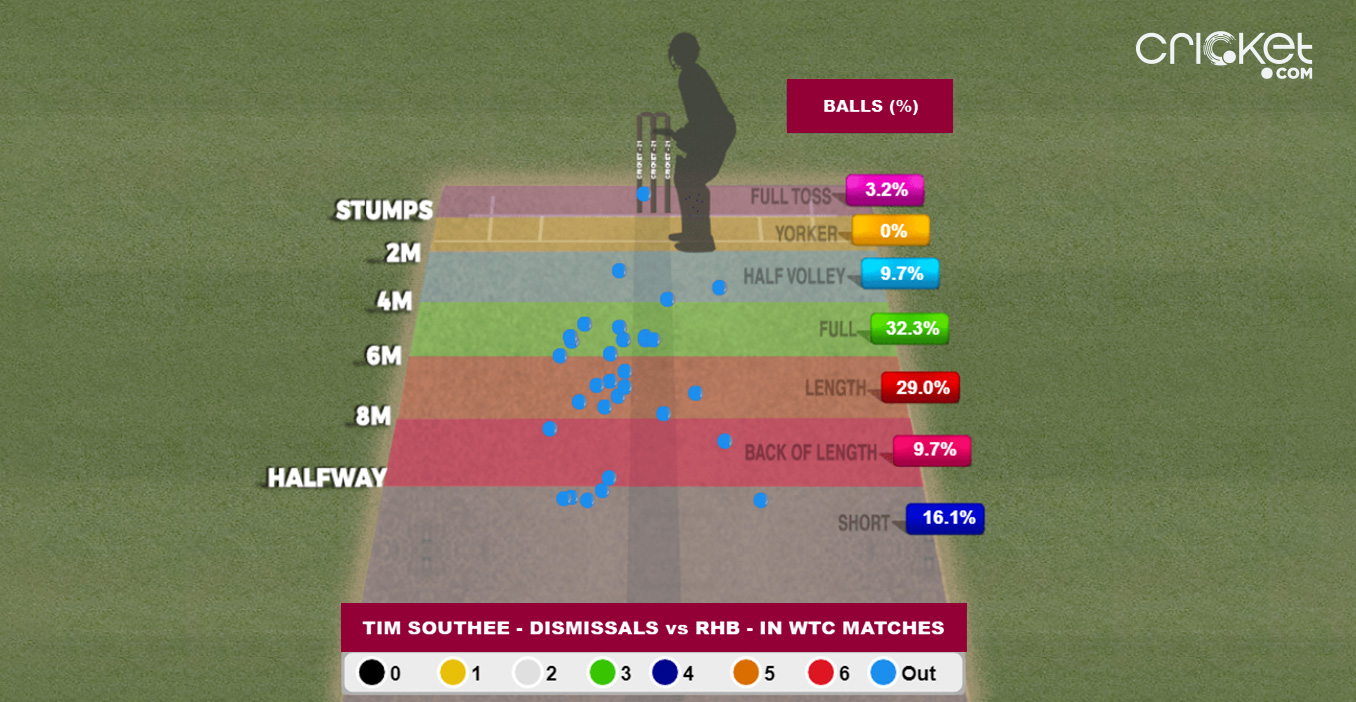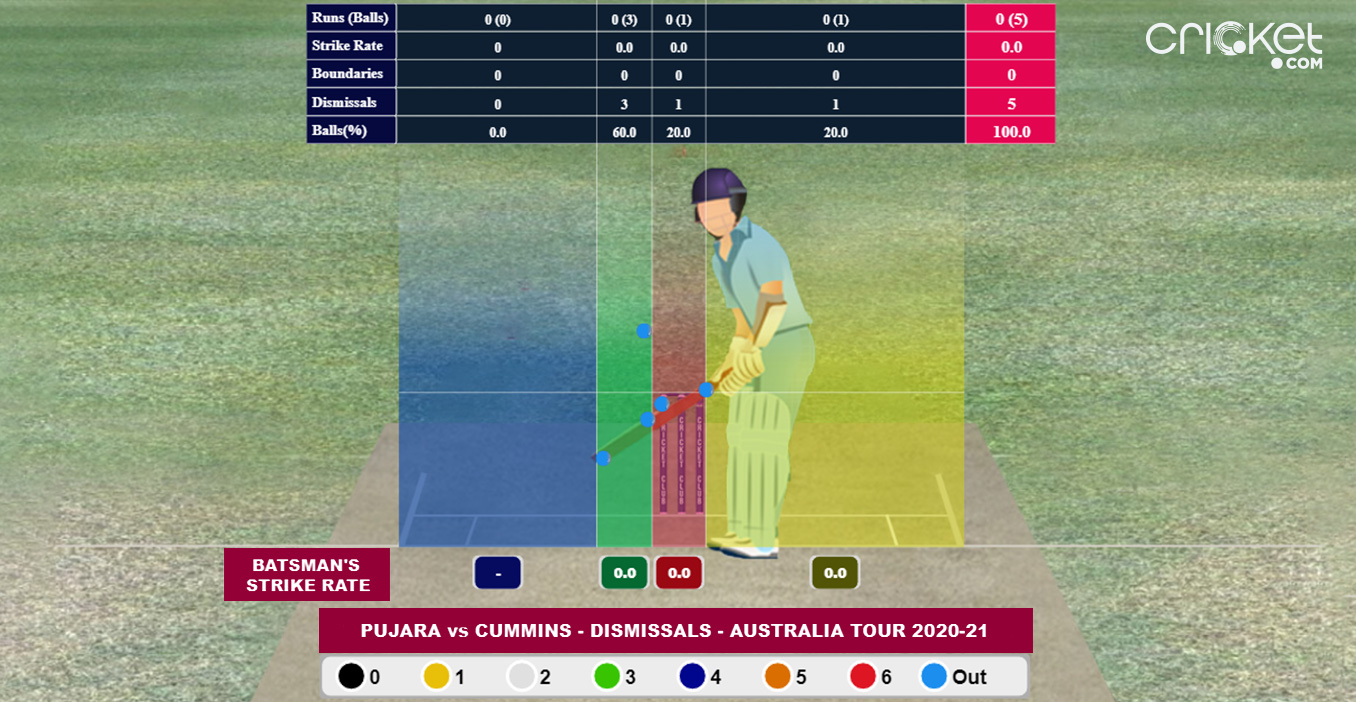 ANALYSIS
ANALYSISAdding to the intrigue on top of playing the World Test Championship final in the English conditions, is the fact that New Zealand are the only team that troubled India in the league stage. Speaking with Ravichandran Ashwin on his YouTube channel, India’s batting coach, Vikram Rathour, admitted that the teams had a plan in place on how to counter the Kiwi bowlers but could not manage to carve sufficient time out to put them in practice.
There is no such issue of lack of time now. The team has been in England since the start of this month with all eyes on the perhaps the biggest prize Test cricket offered so far. Thinking from the point of view of the coaches, the analysts and the batsmen themselves, here is what India's batting line-up need to watch out for.
Note: All numbers are from the WTC cycle
Rohit Sharma
Since he has started opening, his numbers do not suggest any real weakness. He averages over 50 on full and good length against the pacers. At least the numbers do not suggest any weakness against the moving ball.
In a classic case of boon being the bane, Rohit’s average against short-pitched stuff in this period has been 27. Given how good he is against such bowling, his natural instincts are to attack a bouncer, as suggested by an exceptional strike rate of 168.8 against this length. But, both Kagiso Rabada and Pat Cummins have lured him into fatal shots once each. However, going into the final, this will not be Plan A for New Zealand.
Though the evidence is anecdotal, four out of Rohit’s nine dismissals against pace in the WTC period have been caught wicket-keeper. Hence, with the new ball, targeting his outside edge is likely to be the plan for New Zealand.
Biggest threat: Tim Southee – 11 wickets at 24.3 on away going deliveries and Kyle Jamieson – 36.1% wickets caught keeper, second-highest for bowlers with 20 or more wickets in the WTC phase.
Shubman Gill
Starting with his strengths first, Mitchell Starc could dismiss neither him nor Rohit when India were in Australia during their summer. To balls either short or back of a length, Gill has scored 131 runs with just one dismissal since donning India colours.
Like most batsmen in the world, his numbers are not great against the good length balls: seven dismissals at 13.6. The real issue with Gill is his average of 12.8 while being on the front foot as opposed to a whopping 159 hanging back. It is not surprising that he enjoyed the bouncier wicket in Brisbane. Exploiting his reluctant stride forward, the Aussie bowlers had him nicked off a couple of times while those from England caught him in front of the wickets often.

Biggest threat: Tim Southee – Has bowled 76.7% of his balls full or at a good length in the WTC period. Considerably more than any other Kiwi pacer
Cheteshwar Pujara
Pujara has built his game around blunting the pacers down and cashing in on spin. With New Zealand having numerous pace options including seam-bowling all-rounders, it is unlikely that Pujara will get any spin to pounce on.
Pujara has played 1557 balls against pace in the WTC cycle, the fourth-most by a player. But, his average has been a lowly 22.7, largely due to a strike rate of 28.4. This average further drops to 9.6 on good length as the strike rate dips to 18.8.
Back in Australia, Pat Cummins troubled Pujara the most, making the ball rise to uncomfortable lengths in the channel around the off stump.

Biggest threat: Kyle Jamieson with his high release point is most likely to dish out balls at the length Pujara is most uncomfortable at.
Virat Kohli
Kohli has averaged 43.85 in the WTC cycle. But, his stature makes this period seem lean especially as this average drops down to 33.92 against the pacers and even further to 19.5 against them away from home.
It was in 2018 that Kohli got runs everywhere, South Africa, England and Australia. By then he had formulated a plan to tackle balls around his off-stump. But his focus on looking out for balls moving away from him made him susceptible to those that seamed back in. South Africa pacers exploited this in 2018 and so did Tim Southee and Colin de Grandhomme themselves when India toured New Zealand in 2020.
Flick has been his most productive shot but has also led to his undoing 17 times in his career - the most after front foot defence. Twice in England in 2018 itself he missed making contact with the ball while attempting a flick while being in front of the stumps. Since 2018, LBW has been the cause of Kohli’s wicket on nine occasions against pace. Only Joe Root has been LBW more times in this period: 11.
Biggest threat: Trent Boult, like in the semi-final of the 2019 World Cup, darting one back in after a few slanting across and Tim Southee, following a similar route like he did back home in March 2020.
Ajinkya Rahane
With 1095 runs, Rahane tops the charts for India in the WTC. An average of 43 against pace overall is good and 35.08 away from home is still better than most Indian batsmen. Even on different pace lengths, his average is 30 or above, going as high as 87 on the short-pitched stuff and 53 on balls at a full length.
But, left-arm pace has troubled Rahane on the last two away tours. A batting average of 50 against right-arm pace has significantly dropped to 23.8 against left-armers in the WTC period. Boult and Starc have nicked him off once during the respective tours while the latter also caught him in front of his stumps with an incoming delivery once. Neil Wagner too caused a lot of discomfort and eventually dismissed him with a short-pitched delivery.
Biggest threat: Trent Boult testing both the edges of Rahane’s bat
Rishabh Pant
The last of India’s top six, Pant has so far made the year 2021 his own. Overall in the WTC period, he has a decent average of 30.5 against pace away from home. But, the left-arm pacers have managed to dismiss him at a certain line of attack.
Both Boult and Starc have dismissed him once, moving the ball away, nicking him off to the keeper. Unlike a lot of his contemporaries, right-arm pacers bowling from around the wicket have not really troubled him: an average of 43 against such bowling in away conditions.
Biggest threat: Trent Boult, though he has had a better bowling average against right-handers in the WTC cycle.